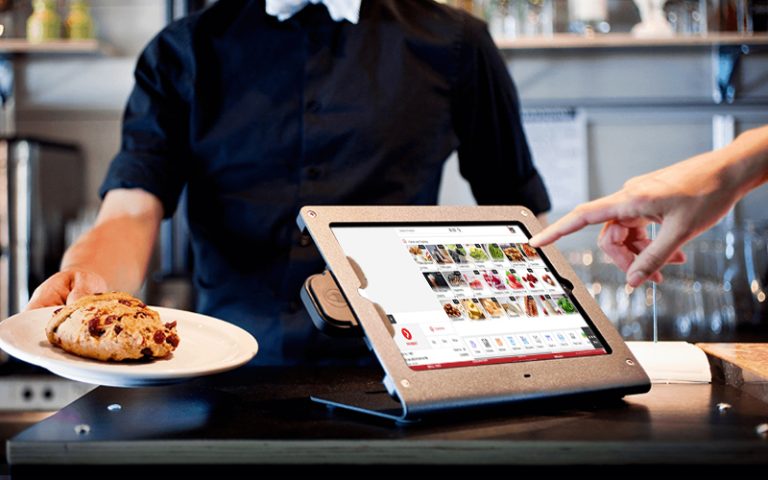Do you know how a POS system works in a restaurant? Are you excited to learn about the working process of restaurant POS software? If you have a restaurant business and want to digitize the operations, you must integrate restaurant POS software.
In the realm of hospitality, efficiency and accuracy are paramount. The bustling environment of a restaurant demands seamless coordination between staff, kitchen, and customers. Enter the Restaurant Point of Sale (POS) system, a sophisticated tool designed to streamline operations, enhance customer service, and optimize business performance. But what exactly powers this essential component of modern dining establishments? Let’s take a closer look at how a restaurant POS system works.
Understanding Restaurant POS Systems
A restaurant POS system is a specialized version of the standard POS setup, tailored to meet the unique needs of food service establishments. Beyond basic transaction processing, these systems incorporate features such as table management, menu customization, and order tracking to facilitate smooth operations in a fast-paced environment.
Components of a Restaurant POS System
1. Front-of-House Hardware:
- Touchscreen Terminal: Functions as the primary interface for servers to input orders, process payments, and manage tables.
- Order Entry Devices: Handheld tablets or mobile devices allow servers to take orders directly at the table, enhancing efficiency and accuracy.
- Receipt Printer: Generates itemized receipts for customers and kitchen tickets for food preparation.
- Card Reader: Facilitates secure payment processing via credit or debit cards.
- Customer-Facing Display: Optional feature that allows customers to view their orders and confirm accuracy during the ordering process.
2. Back-of-House Hardware:
- Kitchen Display System (KDS): Digital display screens in the kitchen area show incoming orders, enabling chefs to prioritize and prepare dishes efficiently.
- Kitchen Printer: Prints out paper tickets detailing food orders for kitchen staff who prefer traditional ticket-based systems.
- Inventory Management Tools: Optional hardware such as barcode scanners and scales assist with inventory tracking and stock management.
3. Software:
- Menu Management: Allows restaurant managers to create and customize menus, including item descriptions, pricing, and modifiers (e.g., substitutions, add-ons).
- Table Management: Enables staff to track table status, assign orders to specific tables, and manage reservations efficiently.
- Order Processing: Processes incoming orders, relays them to the kitchen, and updates order status in real-time as dishes are prepared and served.
- Payment Processing: Securely handles various payment methods, calculates totals, applies discounts, and generates receipts.
- Reporting and Analytics: Generate reports on sales performance, popular menu items, peak hours, and other key metrics to inform business decisions.
How Restaurant POS Systems Work
- Order Placement: When a customer is ready to place an order, the server accesses the POS system, either through a stationary terminal or a handheld device. They input the order items, make any necessary modifications or special requests, and assign the order to a specific table or guest.
- Order Transmission: Once the order is entered into the system, it is transmitted to the kitchen via either a digital display (KDS) or a printed ticket. Chefs receive the order details, prioritize tasks, and begin preparing the dishes.
- Order Fulfillment: As the kitchen prepares each dish, the status updates in real-time on the POS system. Once ready, servers are notified to deliver the food to the appropriate table, ensuring timely service and hot, fresh meals.
- Payment Processing: At the conclusion of the meal, the server presents the check to the customer. Using the POS system, they can split the bill, apply for discounts or promotions, and process various forms of payment. Once payment is received, the transaction is recorded, and a receipt is generated for the customer.
- Data Analysis: In the background, the POS system collects valuable data on sales trends, menu performance, and customer preferences. Restaurant managers can access this data to make informed decisions regarding menu adjustments, staffing levels, and marketing strategies.
Benefits of Restaurant POS Systems
- Efficiency: Streamlines order management, reduces errors, and speeds up service, resulting in happier customers and higher table turnover.
- Accuracy: Minimizes order discrepancies and ensures precise communication between front-of-house and back-of-house staff.
- Inventory Control: Provides insights into ingredient usage, depletion rates, and stock levels, helping to prevent overstocking or shortages.
- Enhanced Customer Experience: Enables faster service, personalized interactions, and smoother transactions, leading to increased customer satisfaction and loyalty.
Conclusion
In the dynamic world of restaurant operations, a reliable POS system is more than just a tool—it’s a cornerstone of success. By seamlessly integrating hardware, software, and analytics capabilities, these systems empower establishments to deliver exceptional dining experiences, maximize efficiency, and drive profitability. As technology continues to evolve, so too will the functionalities and features of restaurant POS systems, ensuring that they remain indispensable assets in the ever-evolving landscape of hospitality.


